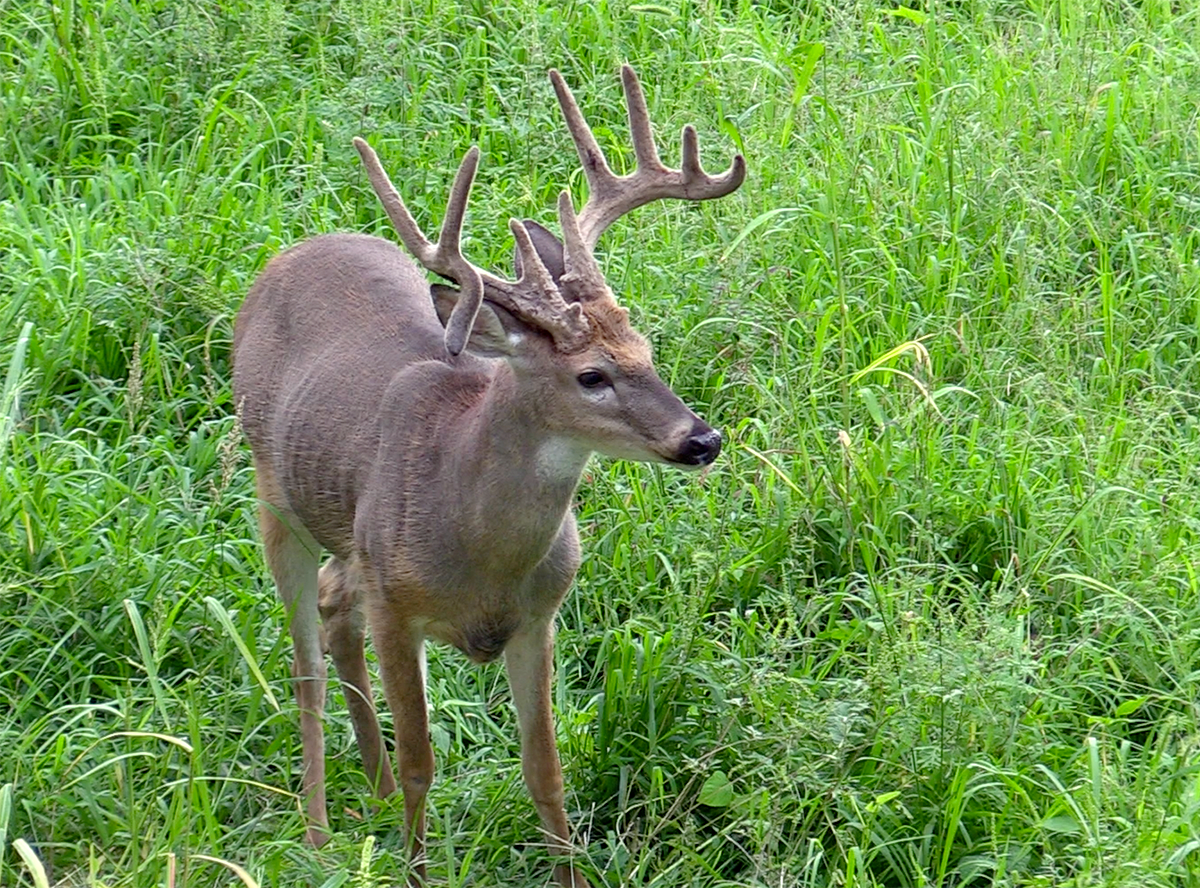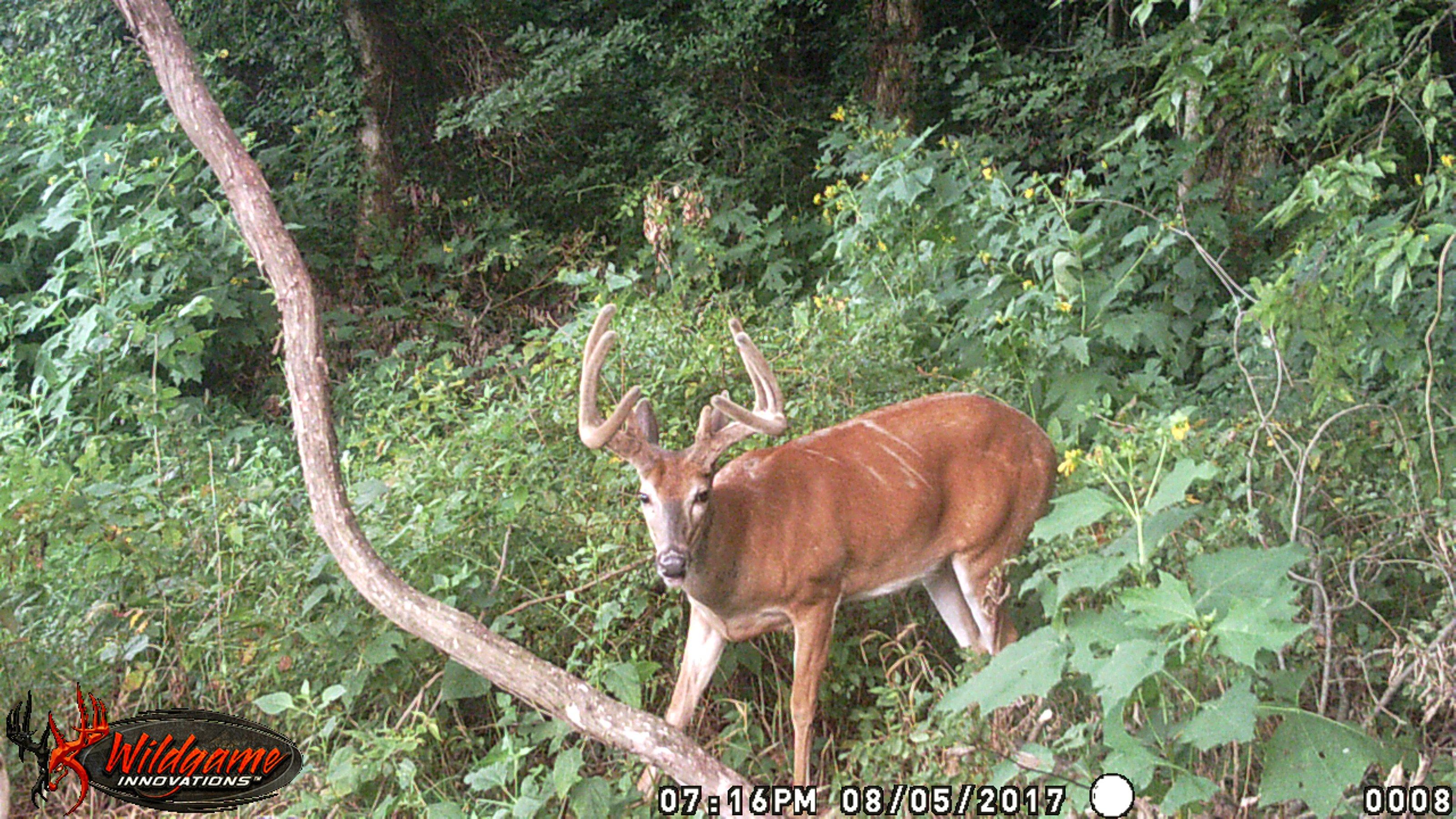With proper planning, these do-it-yourself deer hunts can be once-in-a-lifetime experiences
If you seek adventure, part of the allure of the outdoors is seeing new places. Hunting provides that opportunity and creates additional elements to enjoy. Forging a DIY pursuit can add additional fun, as being successful on your own sweat, time, and expertise makes it even more rewarding.
Although hunters can conduct DIY deer hunts almost anywhere, you must consider certain types of trips. Most DIY roundups focus on specific states, but because of my tendency to seek adventure types, I'll focus on that aspect of DIY options. These hunts offer an advantage or are unique.
1. The Velvet Dream Hunt
Most hunters dream of tagging at least one velvet whitetail. It's a bucket list thing for deer enthusiasts. Battling late-summer heat is challenging, but the reward is worth the sweat and time it takes to pattern early season monsters.
That time of year, whitetails are predictable, which is another reason for taking such a DIY trip. Bucks are much easier to hunt because of their habitual tendencies, which create patterns between bedding areas and food sources. With a little scouting, you can set up along those lines of movement. For folks hunting a target buck, this is arguably the best time to do so.
Where to go: Consider states with opening days that precede most velvet shedding, which really kicks in after Sept. 1 and concludes by Sept. 15. Generally, the most popular and likely destinations include Idaho, Kentucky, Montana, Nebraska, North Dakota, South Carolina, Wyoming, and Washington.
(Don't Miss: Do Biologists Listen to Hunters?)
2. The Oddball Rut Hunt
Everyone loves hunting the rut. We envision monster bucks chasing does in every field and woodlot. It's full of action, eventually culminating with a deer activity frenzy. Although it isn't always the magic solution it's sometimes trumped up to be, the rut is a phenomenal time to fill a tag.
States to try vary depending on where you live and how far you want to travel. You can hunt the rut wherever whitetails roam. That said, the rut ranges from July to February, depending on location, and you can hunt rutting deer during oddball months in states where deer rut outside your home-ground rut timelines. That extends the time you can hunt rutting deer, which can increase the odds of filling multiple buck tags.
Where to go: The northern half of the country largely sees a November rut, but other states have odd timings. Most of that wide window occurs in the South. For example, Florida has regionally defined rut activity that ranges from July to February. Alabama, Louisiana and Mississippi see deer rutting from December to February. Other states experience various rut dates, too.
3. The Boat Access Hunt
People who hunt public land often run into pressure, especially during the rut and gun seasons. That pressure can be difficult to avoid, especially if you aren't hiking far into a property, focusing on overlooked parcels or hunting areas others can't reach.
One example of that involves hunting by boat and focusing on public tracts accessible only by water. It's a great way to escape hunting pressure and find deer that are doing the same. By using a boat, canoe, or kayak, you can also quietly access deer from directions they won't expect, effectively catching them off guard.
Where to go: You can find public land with water-only access in almost every state, but the best method is to focus on states with lots of rivers, lakes, and floodplains. Those areas tend to deter hunters if they can't reach spots on foot. Focusing on areas with increased water access opportunities will help you find ground others aren't hunting. States with the most water access options include Florida, Louisiana, Michigan, Minnesota, New York, and Wisconsin.
(Don't Miss: Lessons Learned from 15 Freaky 200-Inch Bucks)
4. The Mountain Deer Hunt
Those seeking the ultimate physical challenge should plan a mountain whitetail hunt. Mountain deer live in rough terrain, and getting to where they live is rarely simple or easy. All whitetails are tough, but those deer are more so.
Fortunately, folks who learn how to hunt that terrain type will find advantages. Mountain and hill country tends to funnel deer via specific terrain features. Benches, bowls, hubs, leeward (downwind side) ridges, peaks, ridges, saddles, spurs, and other features attract and funnel deer movement. When you find deer and those topographical areas, hunting can be much easier.
Where to go: Many states offer fun hill country and mountain deer hunts with high odds. Still, certain states stand out, including Colorado, Idaho, Kentucky, Ohio, North Carolina, Pennsylvania, and Tennessee. Finding a solid piece of public — or even private, with permission — ground can land you a great place to hunt.
5. The Big Timber Hunt
The most daunting DIY trip is a big timber hunt. Massive, unbroken expanses of timber are intimidating, simply because everything looks the same. It takes time to find deer in such homogenous habitat. There isn't as much edge cover, and deer populations are much lower. That said, if you can find success in those environs, you can do so anywhere. It's a true test of hunting skill.
Look for any edge habitat. It might not be very visible on aerials, but there's some there. Find it, and scout the area thoroughly. Other spots to focus on include mast crop hotspots, topography-focused funnels, and pinch-points.
Where to go: States with most unbroken timber that also offer quality deer hunting are spread throughout the nation. Top destinations include Alabama, Maine, New Hampshire, Vermont, Virginia, and West Virginia. Each is at least 70% forested. The remainder of the country falls beneath that threshold. Other big-timber states with good hunting include Idaho, Kentucky, Ohio, and Tennessee.
(Don't Miss: 10 More Deer Hunting Myths Debunked)
6. The Open Prairie Hunt
Open ground void of trees can be daunting and downright intimidating to deer hunters. Those hunting such ground for the first time can even be shell-shocked. Still, that will pass, and you'll quickly get the hang of it.
Those deer might seem difficult, but with the right tactics, they're much easier to pursue. First, if you can find pockets of timber, you'll likely find deer. Of course, they'll still spend a lot of time on prairie ground, but they'll use the timber. Set up along highly used travel routes and wait for something good to happen. Or start moving and glassing, and execute a good stalk.
Where to go: States with the most prairie and DIY access include Colorado, Kansas, Nebraska, North Dakota, Oklahoma, and South Dakota. Texas has some, too, but public access is very limited.
7. The Swamp Ground Hunt
Hunting marshes and swamplands is all the rage these days. In such environments, mature bucks hide away from the hustle and bustle of most hunter movements, effectively avoiding harvest. As such, those deer reach older ages.
Hunters who are tough enough to brave the elements and savvy enough to do so safely can put themselves in prime positions. Using unique access methods can help reach hard-to-hunt areas and ultimately lead to hunting big deer that others aren't close to.
Where to go: States with heavy concentrations of marshes and swamps include Arkansas, Delaware, Florida, Louisiana, Maryland, Massachusetts, Michigan, Minnesota, Mississippi, New Jersey, Rhode Island, and Wisconsin. Each has higher percentages of land covered with marshes, swamps, and water.
The Dream Hunt
A dream DIY deer hunt will look different for everyone. It's important to analyze what you've always wanted to do. Start researching and planning, and then just do it. Dream deer hunts aren't out of reach and can even be completed on a budget. You know what your dream DIY deer hunt looks like. It's time to make it happen and enjoy the journey.
(Don't Miss: When is it OK to Hunt a Property Line?)













